
|
Astronomy Picture Of the Day (APOD)
 APOD: 2025 July 24 Б Titan Shadow Transit
APOD: 2025 July 24 Б Titan Shadow Transit
23.07.2025
Every 15 years or so, Saturn's rings are tilted edge-on to our line of sight. As the bright, beautiful ring system grows narrower and fainter it becomes increasingly difficult to see for denizens of planet Earth.
 APOD: 2025 July 23 Б Fireball over Cape San Blas
APOD: 2025 July 23 Б Fireball over Cape San Blas
22.07.2025
Have you ever seen a fireball? In astronomy, a fireball is a very bright meteor -- one at least as bright as Venus and possibly brighter than even a full Moon. Fireballs are rare -- if you see one you are likely to remember it for your whole life.
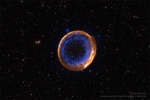 APOD: 2025 July 22 Б A Double Detonation Supernova
APOD: 2025 July 22 Б A Double Detonation Supernova
21.07.2025
Can some supernovas explode twice? Yes, when the first explosion acts like a detonator for the second. This is a leading hypothesis for the cause of supernova remnant (SNR) 0509-67
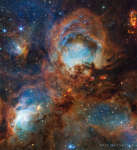 APOD: 2025 July 21 Б Cats Paw Nebula from Webb Space Telescope
APOD: 2025 July 21 Б Cats Paw Nebula from Webb Space Telescope
20.07.2025
Nebulas are perhaps as famous for being identified with familiar shapes as perhaps cats are for getting into trouble. Still, no known cat could have created the vast Cat's Paw Nebula visible toward the constellation of the Scorpion (Scorpius).
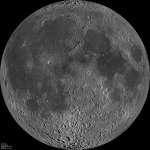 APOD: 2025 July 20 Б Lunar Nearside
APOD: 2025 July 20 Б Lunar Nearside
19.07.2025
About 1,300 images from the Lunar Reconnaissance Orbiter spacecraft's wide angle camera were used to compose this spectacular view of a familiar face - the lunar nearside. But why is there a lunar nearside? The Moon rotates on its axis and orbits the Earth at the same rate, about once every 28 days.
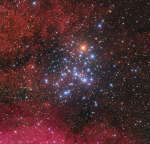 APOD: 2025 July 19 Б Messier 6
APOD: 2025 July 19 Б Messier 6
18.07.2025
The sixth object in Charles Messier's famous catalog of things which are not comets, Messier 6 is a galactic or open star cluster. A gathering of 100 stars or so, all around 100 million years young, M6 lies some 1,600 light-years away toward the central Milky Way in the constellation Scorpius.
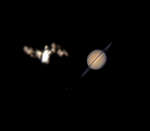 APOD: 2025 July 18 Б ISS Meets Saturn
APOD: 2025 July 18 Б ISS Meets Saturn
17.07.2025
This month, bright planet Saturn rises in evening skies, its rings oriented nearly edge-on when viewed from planet Earth. And in the early morning hours on July 6, it posed very briefly with the International Space Station when viewed from a location in Federal Way, Washington, USA.
 APOD: 2025 July 17 Б 3I/ATLAS
APOD: 2025 July 17 Б 3I/ATLAS
16.07.2025
Discovered on July 1 with the NASA-funded ATLAS (Asteroid Terrestrial-impact Last Alert, System) survey telescope in Rio Hurtado, Chile, 3I/ATLAS is so designated as the third known interstellar object to pass through our Solar System It follows 1I/йOumuamua in 2017 and the comet 2I/Borisov in 2019.
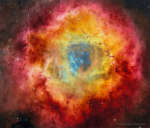 APOD: 2025 July 16 Б The Rosette Nebula from DECam
APOD: 2025 July 16 Б The Rosette Nebula from DECam
15.07.2025
Would the Rosette Nebula by any other name look as sweet? The bland New General Catalog designation of NGC 2237 doesn't appear to diminish the appearance of this flowery emission nebula, as captured by the Dark Energy Camera (DECam) on the Blanco 4-meter telescope at the NSF's Cerro Tololo Inter-American Observatory in Chile.
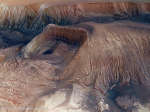 APOD: 2025 July 15 Б Collapse in Hebes Chasma on Mars
APOD: 2025 July 15 Б Collapse in Hebes Chasma on Mars
14.07.2025
What's happened in Hebes Chasma on Mars? Hebes Chasma is a depression just north of the enormous Valles Marineris canyon. Since the depression is unconnected to other surface features, it is unclear where the internal material went.
|
January February March April May June July August September October November |
|||||||||||||||||||||||||||||||||||||||||||||||||